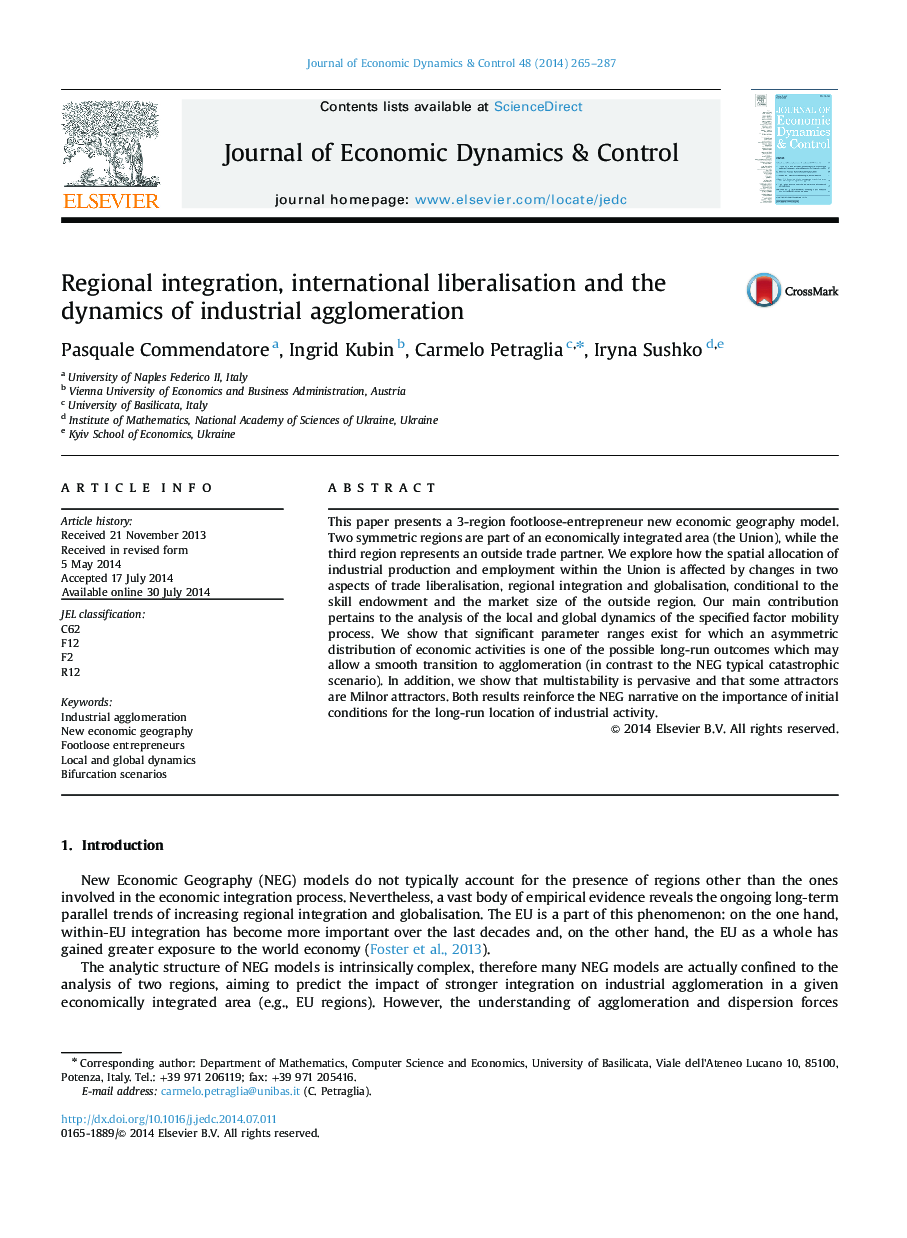| Article ID | Journal | Published Year | Pages | File Type |
|---|---|---|---|---|
| 5098536 | Journal of Economic Dynamics and Control | 2014 | 23 Pages |
Abstract
This paper presents a 3-region footloose-entrepreneur new economic geography model. Two symmetric regions are part of an economically integrated area (the Union), while the third region represents an outside trade partner. We explore how the spatial allocation of industrial production and employment within the Union is affected by changes in two aspects of trade liberalisation, regional integration and globalisation, conditional to the skill endowment and the market size of the outside region. Our main contribution pertains to the analysis of the local and global dynamics of the specified factor mobility process. We show that significant parameter ranges exist for which an asymmetric distribution of economic activities is one of the possible long-run outcomes which may allow a smooth transition to agglomeration (in contrast to the NEG typical catastrophic scenario). In addition, we show that multistability is pervasive and that some attractors are Milnor attractors. Both results reinforce the NEG narrative on the importance of initial conditions for the long-run location of industrial activity.
Related Topics
Physical Sciences and Engineering
Mathematics
Control and Optimization
Authors
Pasquale Commendatore, Ingrid Kubin, Carmelo Petraglia, Iryna Sushko,
